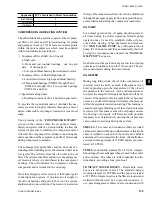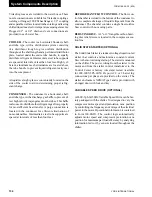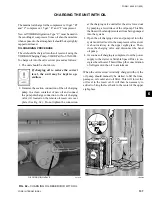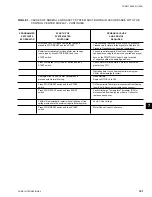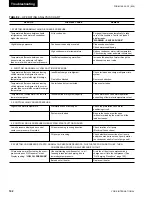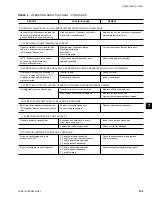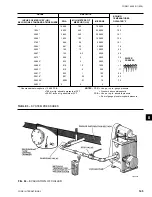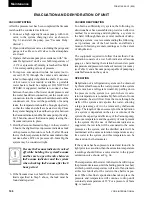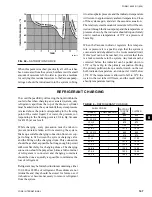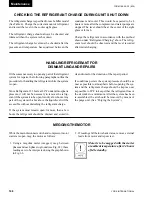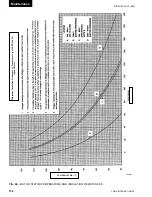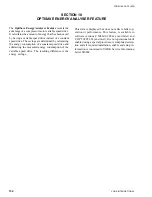
YORK INTERNATIONAL
144
FORM 160.55-O1 (920)
Maintenance
SECTION 8
MAINTENANCE
RENEWAL PARTS
For any required Renewal Parts refer to Forms listed on page 4.
LEAK TESTING DURING OPERATION
The refrigerant side of the system is carefully pressure
tested and evacuated at the factory.
After the system is in operation under load, the high
pressure components should be carefully leak tested
with a leak detector to be sure all joints are tight. If a
leak exists frequent purging will be required or refrig-
erant will be lost.
If any leaks are indicated, they must be repaired im-
mediately. Usually, leaks can be stopped by tightening
flare nuts or flange bolts. However, if it is necessary to
repair a welded joint, the refrigerant charge must be
removed (See “Handling Refrigerant for Dismantling
and Repairs”, page 140).
CONDUCTING PRESSURE TEST
With the refrigerant charge removed and all known
leaks repaired, the system should be charged with a
small amount of R-22 mixed with dry nitrogen so that
a halide torch or electronic leak detector can be used to
detect any leaks too small to be found by the soap test.
Do not use excessive amounts of R-22; use only enough
for proper leak detection.
To test with R-22, proceed as follows:
1. With no pressure in the system, charge R-22 gas into
the system through the charging valve to a pressure
of 2 PSIG.
2. Build up the system pressure with dry nitrogen to
approximately 10 PSIG. To be sure that the con-
centration of refrigerant has reached all parts of the
system, slightly open the oil charging valve and test
for the presence of refrigerant with a leak detector.
3. Test around each joint and factory weld. It is impor-
tant that this test by thoroughly and carefully done,
spending as much time as necessary and using a good
leak detector.
4. To check for refrigerant leaks in the cooler and con-
denser, open the vents in the cooler and condenser
heads and test for the presence of refrigerant. If
no refrigerant is present, the tubes and tube sheets
may be considered tight. If refrigerant is detected
at the vents, the heads must be removed, the leak
located (by means of soap test or leak detector) and
repaired.
5. When absolute tightness of the system has been es-
tablished, blow the mixture of nitrogen and refrig-
erant through the charging valve.
CHECKING SYSTEM FOR LEAKS




